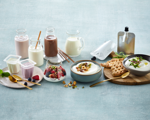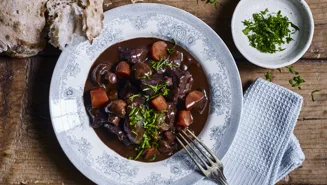
No, buttermilk is not lactose-free. It is a fermented dairy product containing less lactose than other types of milk, but it still does contain some.
To learn more about the thick, tangy milk type that is often used in baking and cooking or enjoyed as a fresh milk drink, continue reading below where we delve deeper into its production and lactose content.
How much lactose is in buttermilk?
Buttermilk, known for its delightful tang and creamy texture, offers a lower lactose content compared to regular milk. This reduction occurs during the fermentation process, where beneficial bacteria work their magic by converting some of the lactose, a naturally occurring sugar in milk, into lactic acid. This conversion is responsible for the characteristic flavour and texture of buttermilk.
The exact lactose content can vary depending on the specific brand and its production process, but on average, buttermilk contains approximately 2-4 grams of lactose per 100 grams. This amount is lower than the content in regular cow’s milk, which typically contains around 4.7-5 grams per 100 grams. It is also lower than sheep’s milk, which contains approx. 4.2-5.4 grams per 100 grams, and goat’s milk, which contains approximately 4.1 grams per 100 grams.
You can read more about different milk types in our articles What is lactose-free milk?, Is goat’s milk lactose-free?, and Is sheep’s milk lactose-free?.

Is there a lactose-free buttermilk?
Lactose-free buttermilk is less common than other lactose-free dairy products, but it is available. We do not produce it at Arla, though. For those seeking alternatives, lactose-free Greek yoghurt or lactose-free kefir can serve similar purposes in recipes. For example, in pancakes and cake as well as in savoury cuisine like marinades, dressings, and creamy sauces, where the tangy flavour can enhance the overall taste and texture of the dish.
Making lactose-free buttermilk
In the production of most commercial buttermilk, including the regular kind of buttermilk at Arla, lactic acid bacteria are added to pasteurised milk. This process turns lactose into lactic acid, giving buttermilk its unique tang. For lactose-free varieties, the enzyme lactase is introduced along with the bacterial culture. This enzyme works to further break down lactose into simpler sugars.
Lactose-free buttermilk retains the tangy flavour and creamy texture of regular buttermilk but might have a slightly sweeter taste due to the alteration in lactose content. The versatile ingredient can be a valuable addition to your culinary repertoire.









































